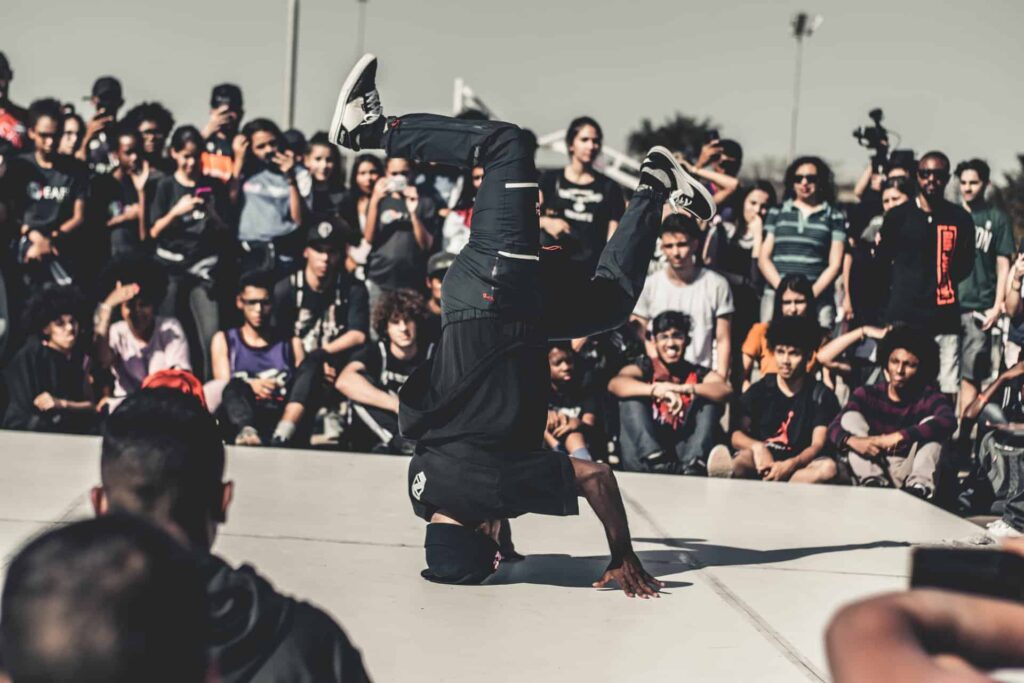Introduction
From its humble beginnings in the Bronx to its widespread impact on popular culture, hip hop has become one of the most influential music genres in the world. With its unique combination of rhythm, rhyme, and storytelling, rap music has resonated with millions of fans and given voice to the experiences of diverse communities. In this article, we will delve into the history and evolution of hip hop, exploring its roots, key artists, and the impact it has had on the music industry and society at large.
The Origins: The Bronx and the Birth of Hip Hop
Hip hop emerged in the early 1970s in the Bronx, New York City, as a creative response to the social, political, and economic challenges faced by African American and Latino communities. It began as a cultural movement, encompassing not just music, but also dance (breakdancing), visual art (graffiti), and fashion.
DJ Kool Herc, often credited as the “father of hip hop,” pioneered the genre by isolating and extending instrumental breaks in funk and soul records. This allowed for the development of “breakbeats,” which provided the rhythmic foundation for rappers to deliver their lyrics, known as “rapping” or “MCing.”
The 1980s: The Golden Age of Hip Hop
The 1980s marked the first major wave of commercial success for hip hop. The Sugarhill Gang’s “Rapper’s Delight” (1979) is widely regarded as the first rap song to gain mainstream popularity, opening the door for other artists to follow suit. Run-DMC, one of the most influential groups of this era, brought a harder-edged sound to hip hop, fusing it with rock elements in songs like “Rock Box” and their Aerosmith collaboration, “Walk This Way.”
The “Golden Age” of hip hop was characterized by innovation, experimentation, and a growing focus on lyricism and social commentary. Iconic artists like Public Enemy, N.W.A., and Eric B. & Rakim tackled political and social issues, using their music as a platform for activism and raising awareness.
The 1990s: East Coast vs. West Coast and the Rise of Gangsta Rap
The 1990s saw a significant shift in the hip hop landscape, with the emergence of gangsta rap and the notorious East Coast-West Coast rivalry. West Coast artists like Dr. Dre, Snoop Dogg, and Tupac Shakur gained prominence with their G-funk sound, characterized by its laid-back, melodic beats and gritty lyrics. Meanwhile, East Coast hip hop, led by artists such as The Notorious B.I.G., Nas, and Wu-Tang Clan, showcased a more diverse range of styles and a strong emphasis on complex lyricism.
Unfortunately, the rivalry between the two coasts escalated, culminating in the tragic deaths of Tupac Shakur and The Notorious B.I.G., which left an indelible mark on the genre and its history.
The 2000s: Commercial Success and Diversification
The 2000s saw hip hop reaching new heights of commercial success and becoming a dominant force in mainstream music. Artists like Jay-Z, Eminem, and Kanye West achieved massive popularity, with their albums often topping the charts and garnering numerous accolades.
This era also witnessed the diversification of hip hop, as artists began to explore different sounds and styles. Southern hip hop, for example, gained widespread recognition, with acts like OutKast, Ludacris, and T.I. bringing new regional flavors to the genre.
The 2010s and Beyond: Global Impact and Cultural Dominance
In the 2010s, hip hop continued to expand its influence and cultural dominance. Streaming platforms like Spotify and Apple Music played a significant role in increasing the accessibility and reach of hip hop music, allowing artists to connect with fans across the globe.
During this period, the genre became increasingly experimental, with artists like Kendrick Lamar, Frank Ocean, and Tyler, The Creator pushing the boundaries of traditional hip hop. These artists often incorporated elements from various musical genres and addressed topics such as mental health, politics, and social issues in their music.
The influence of hip hop was felt worldwide, as international artists like Stormzy (UK), AKA (South Africa), and Keith Ape (South Korea) gained recognition for their unique regional takes on the genre. This global impact has led to the emergence of diverse hip hop scenes, reflecting the ever-evolving nature of the genre.
Furthermore, hip hop’s impact extended beyond music, influencing fashion, film, and language. The genre’s immense popularity also facilitated collaborations with artists from other genres, such as pop and electronic dance music (EDM), resulting in crossover hits that further cemented hip hop’s position in the mainstream.
The 2010s: The Emergence of Trap and Female Rappers
The 2010s also witnessed the rise of trap music, a subgenre of hip hop that originated in the Southern United States. Trap is characterized by its heavy use of 808 drum machines, dark and moody atmospheres, and rapid hi-hat patterns. Artists like Future, Migos, and Travis Scott have popularized trap music, with their distinct sound and style becoming influential in mainstream hip hop.
During this decade, female rappers began to gain more prominence and recognition in the industry, challenging the genre’s historically male-dominated landscape. Pioneering artists like Nicki Minaj, Cardi B, and Megan Thee Stallion have achieved immense success, showcasing their lyrical prowess, unique flows, and bold personas. Their impact has paved the way for a new generation of female rappers, such as Doja Cat, Rico Nasty, and Saweetie, to make their mark on the hip hop scene.
The Role of Social Media and Viral Hits
Social media platforms like Instagram, Twitter, and TikTok have played a significant role in shaping hip hop in the 2010s and beyond. These platforms have allowed artists to build their fanbase, promote their music, and engage with their audience directly. In some cases, viral hits originating from social media platforms have catapulted artists to stardom, as seen with Lil Nas X’s “Old Town Road,” which gained popularity on TikTok before becoming a chart-topping hit.
Hip Hop and Social Activism
As a genre born out of social and political struggles, hip hop has maintained a strong connection to activism throughout its history. The 2010s and beyond have seen a resurgence of socially conscious hip hop, with artists like Kendrick Lamar, J. Cole, and Childish Gambino addressing topics such as racial injustice, police brutality, and systemic inequality in their music. Additionally, hip hop artists have used their platforms to raise awareness and support various social causes, further emphasizing the genre’s role as a vehicle for change.
Summary
The rise of hip hop is a testament to the genre’s resilience, creativity, and ability to adapt to changing times. From its origins in the Bronx to its current global dominance, hip hop has transformed the music industry and made a lasting impact on popular culture. With its diverse influences, international reach, and continuing relevance in addressing social issues, hip hop remains a powerful medium for self-expression, storytelling, and social commentary. As the genre continues to evolve, it will undoubtedly inspire future generations of artists to carry on its legacy and push the boundaries of music and culture.

